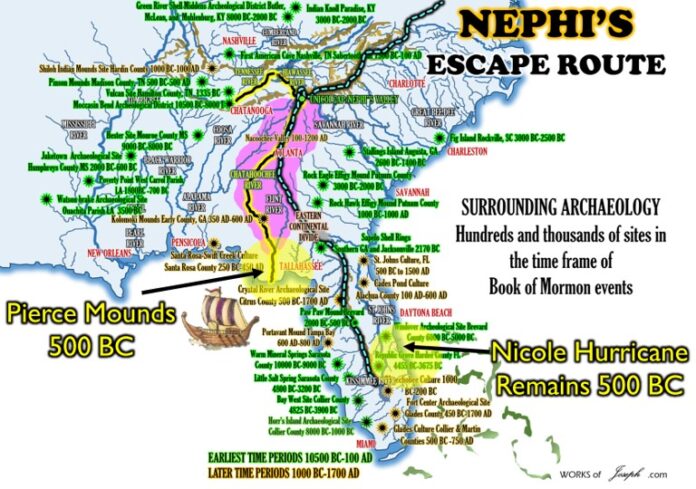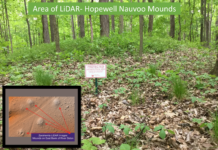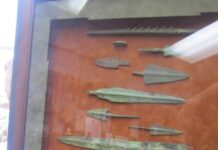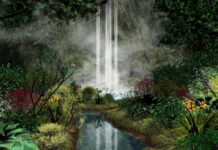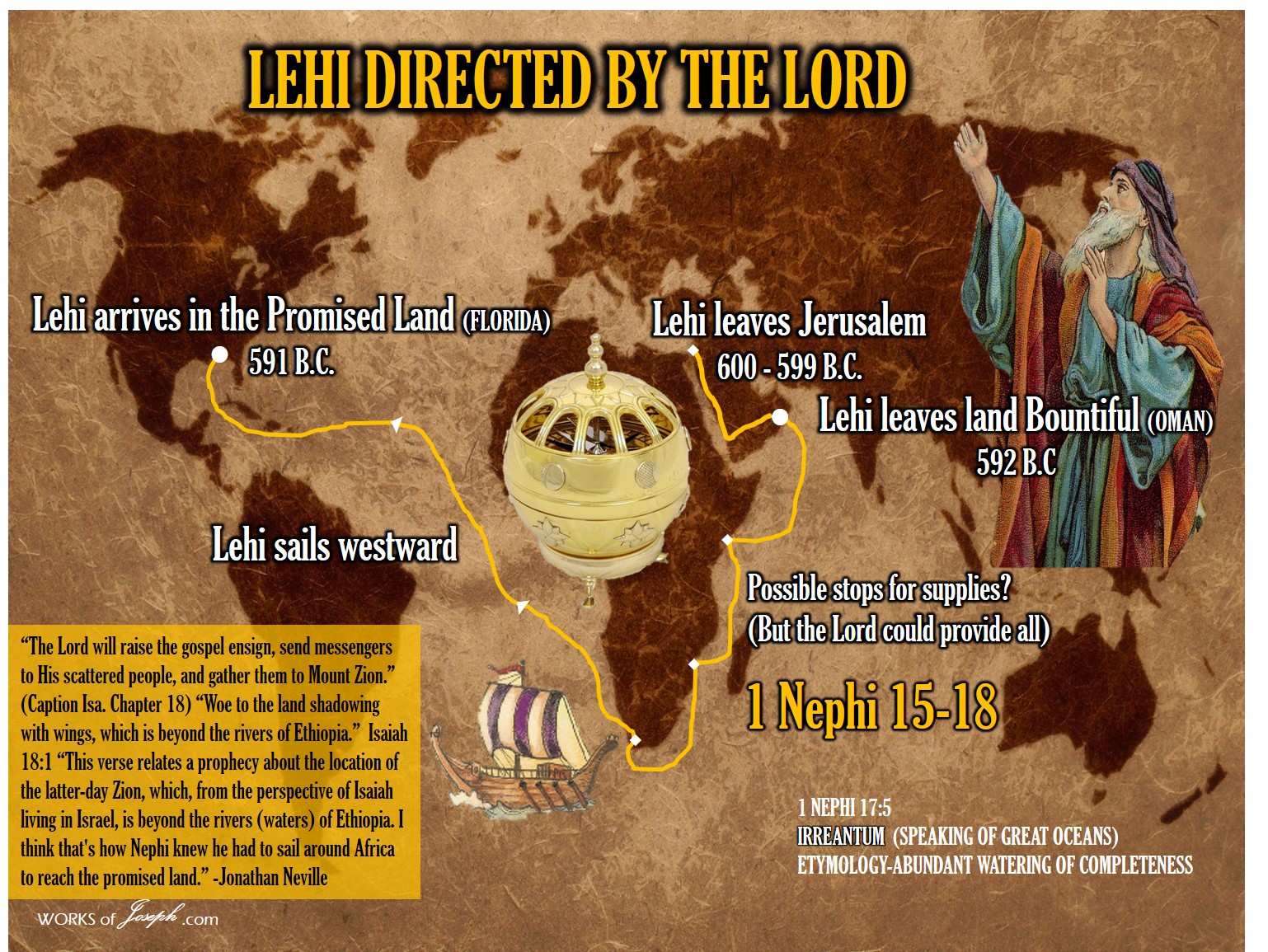
Blog here about more details why the Florida Landing is very plausible.
The possibilities of Florida as the location of the First Landing of Lehi keeps growing. Historians tell us the Hopewell Culture began in Florida in 600 BC and I believe the Hopewell Culture is most likely the Nephites of the Book of Mormon.
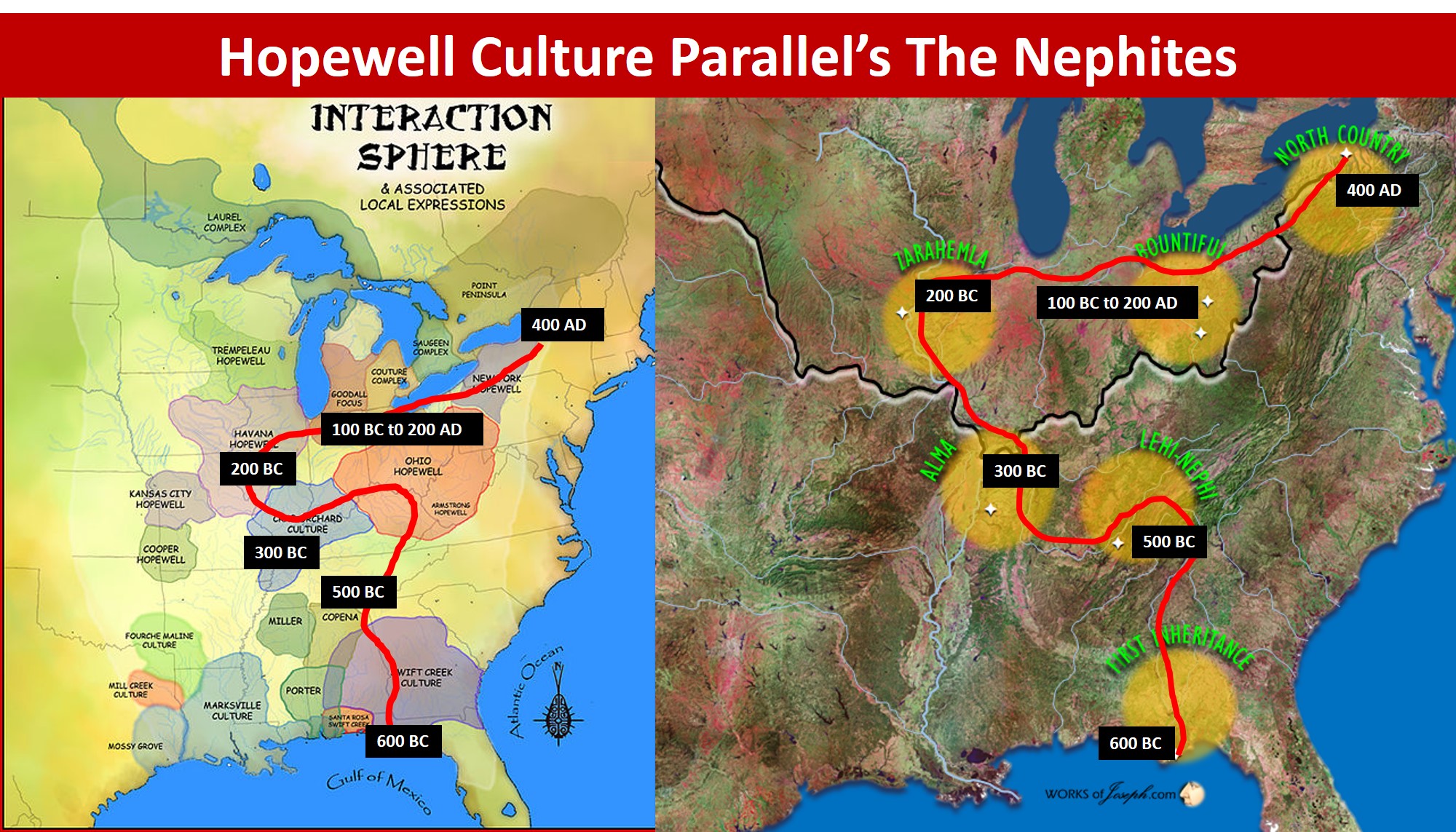
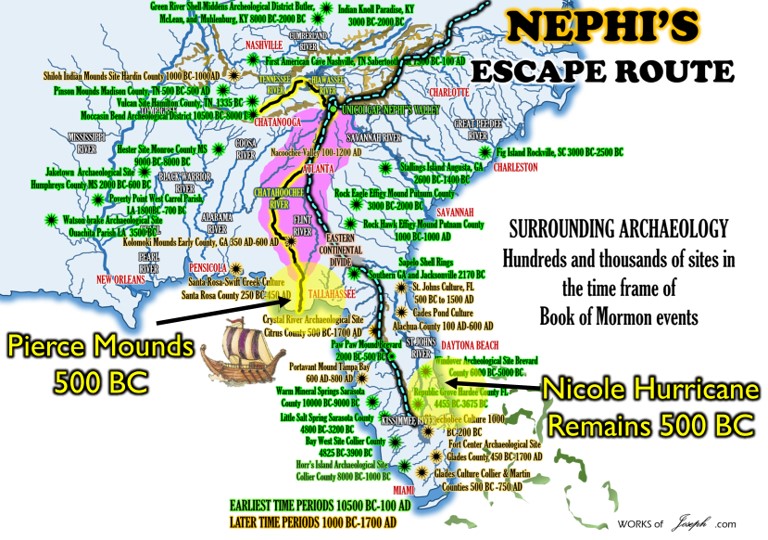 But there is a wealth of unpublished, dusty old paper out there with information that can greatly change or help interpretation.” Artifacts at the British Museum were probably purchased, a common practice during the 19th century. The museum’s collection includes a clay pipe and four stone artifacts, obtained in 1869, from a dig at “Turtle Harbor near Apalachicola” and stone and shell tools and pottery, acquired in 1875, are “from mounds near Apalachicola.” Pottery from Pierce Mounds is showcased at the Smithsonian dated from 550 BC to 1500 AD.” Pierce Mounds Complex An Ancient Capital in Northwest Florida Nancy Marie White
But there is a wealth of unpublished, dusty old paper out there with information that can greatly change or help interpretation.” Artifacts at the British Museum were probably purchased, a common practice during the 19th century. The museum’s collection includes a clay pipe and four stone artifacts, obtained in 1869, from a dig at “Turtle Harbor near Apalachicola” and stone and shell tools and pottery, acquired in 1875, are “from mounds near Apalachicola.” Pottery from Pierce Mounds is showcased at the Smithsonian dated from 550 BC to 1500 AD.” Pierce Mounds Complex An Ancient Capital in Northwest Florida Nancy Marie White 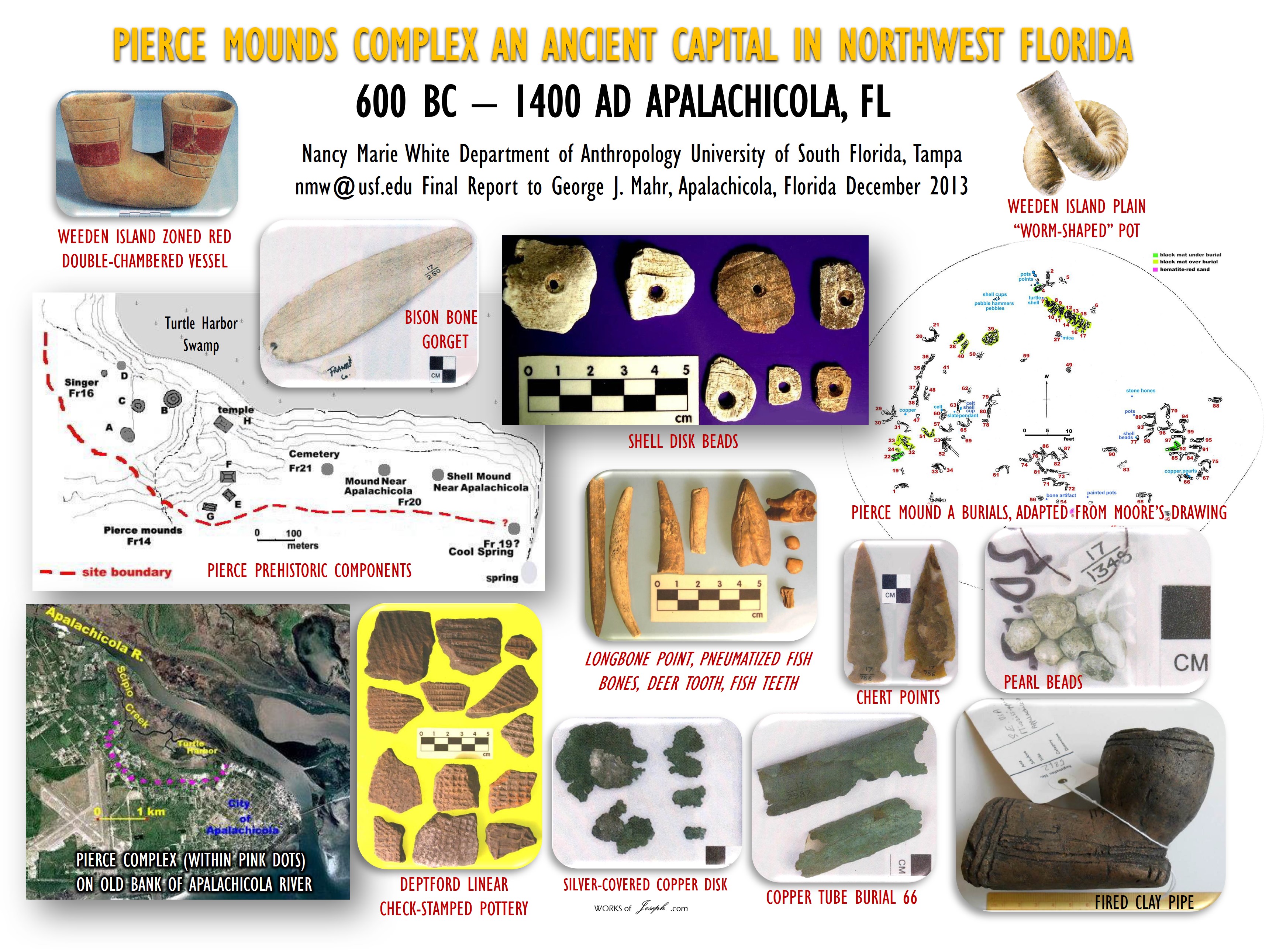
Pierce Mounds in Apalachicola, FL- Very Likely Land of Lehi’s Inheritance
The mounds were named for Alton Pierce, an early owner of the site. Much of the site is now on private property and inaccessible to the public. I personally visited these 13- Pierce mounds with Mike and Betty LaFontaine and a few of their friends on Oct 2017 with George Mahr the owner of the property. We saw and walked and dug around the surface of these mounds which also included a sizeable temple mound and a shell midden more than a mile long, shared with a bustling village the area around what is now Magnolia Cemetery.

Daniel Seinfeld of Apalachicola times wrote the following: “The people who lived there were prosperous and powerful, influencing trade traffic to the north along Apalachicola River and to the east and west along the Gulf Coast. They were spared the hard work of farming by an abundance of seafood and game as well as wild fruit and nuts. There is evidence they imported cornmeal to broaden their diet. Skilled potters who produced both fanciful and utilitarian objects, they buried their dead with precious objects including silver, copper and pearls. The settlement was founded around 500 BC. Around the same time, the Scandinavian Iron Age began, the Chinese developed the handheld trigger crossbow, and burnt brick and donkey-powered grain mills were used for the first time in Greece.
More Pierce Mounds, Apalachicola, Florida 600 BC
“Pierce Mounds, at the mouth of the river (Apalachicola) and overlooking both north-south and east-west traffic, were part of a major multi-component center with remarkable Middle Woodland and Early Woodland mounds.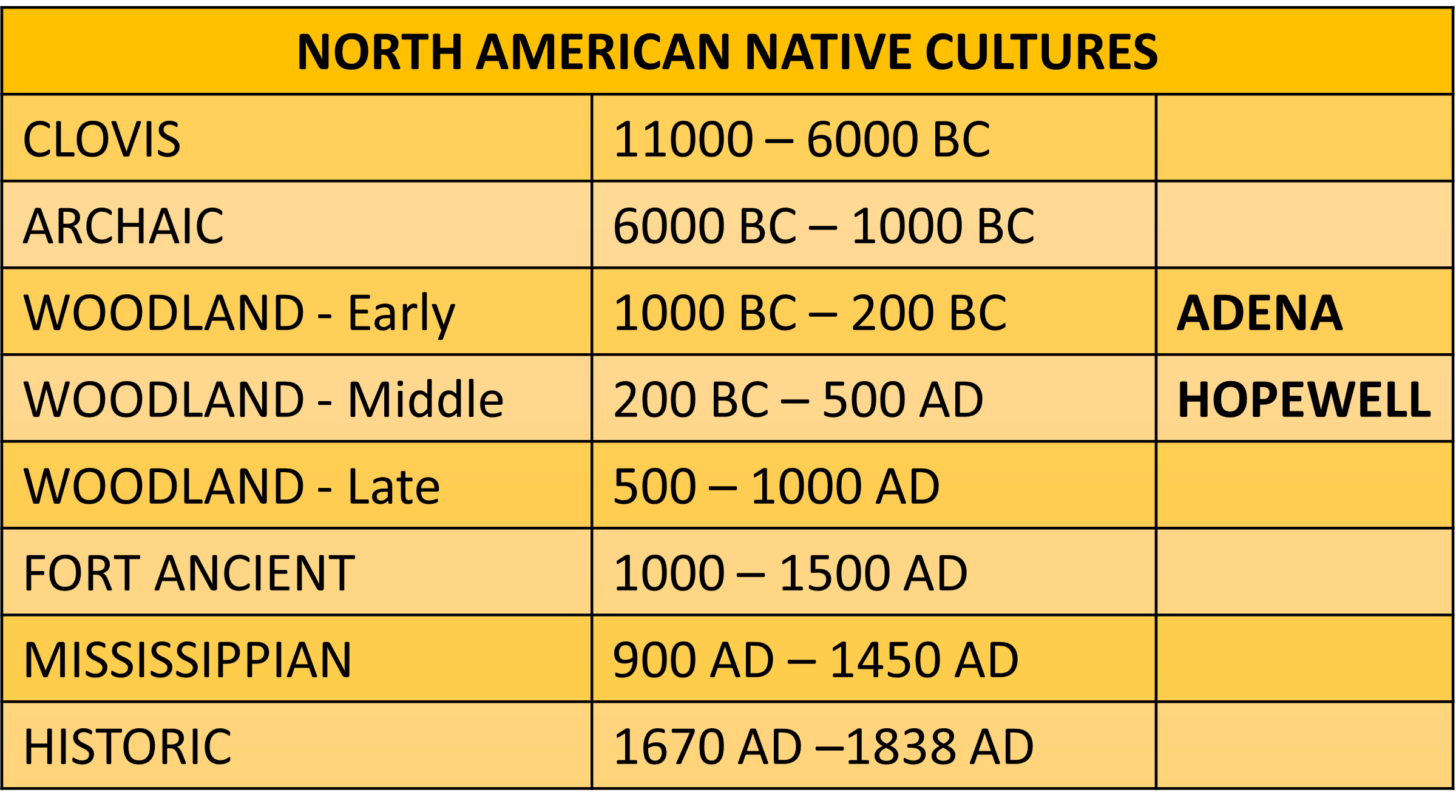
Materials clustered around the Apalachicola delta and coast close to Pierce and spread from there up the river. Prestige goods were possibly traded down to major mound centers then moved to other centers along the valley, ending up in burial mounds all over the valley, perhaps interred with important people during Swift Creek times, (100-800 AD) and interred in mass deposits in slightly later Weeden Island times. Such items likely were transported down the river to Pierce, where they were distributed to the inhabitants of nearby coastal mounds involved in the procurement and management end of the trade network, and then traded up the river to other trade partners. Since nearly all the mound sites documented in this thesis have both Swift Creek and Weeden Island pottery, the suggestion is also that these systems endured for a long time as ceramic styles and possibly associated archaeological cultures changed. This research should contribute to a better understanding of Middle Woodland ceremonialism in the Southeastern United States and the Apalachicola watershed, and the systems through which ceremonial artifacts moved around the land. In the future, data from higher up the river in Georgia and Alabama could be compared to help create a picture of Middle Woodland manifestation in the entire valley for comparison with the rest of the Southeast and discussion of differences between trade routes along major waterways and overland historic trails. Further testing of the exotic materials in the mounds for trace elements or other data could shed light on trade routes along which these artifacts and raw materials were traded. With better understanding of the major and minor routes, questions regarding the role of sites in Middle Woodland exchange can be answered. Mounds like Poplar Springs Mound are facing destruction from development and looting. It is essential that these sites are studied before they are gone.
In northwest Florida, the great Apalachicola River system is formed from the confluence of the Flint River, which originates near Atlanta, and the Chattahoochee River, which flows out of the Blue Ridge mountains of north Georgia. The Apalachicola runs over 100 miles to the Gulf of Mexico (Figure 1). It is Florida’s largest river in terms of flow, and the only one containing snowmelt. Its valley is home to several kinds of rare plants and animals and more reptile and amphibian species than anywhere else north of Mexico, amid an exceedingly rich biotic system. Where the river flows into Apalachicola Bay, the abundant life possible in estuarine systems provides the shrimp, oysters, and other seafood for which this region is famous today. The bays and sounds are protected by beautiful barrier islands with white sugar-sand beaches. At the mouth of the river sits the small town of Apalachicola, today known for oysters and picturesque old houses from its historic past. But for about 2000 years of prehistoric time, this location was an important Native American capital centered around the Pierce mounds.
The Pierce site consists of a long shell midden ridge, a large village area, and 13 mounds, constructed and inhabited over a period of time estimated to extend from perhaps 600 B.C. until around A.D. 1400. Its archaeological evidence indicates day-to-day occupation by indigenous peoples who fished, gathered, and hunted, leaving their food garbage and discarded artifacts piled along the riverbank. The evidence shows other aspects of their lives as well, in the construction of burial mounds and inclusion of elaborate ritual artifacts for the honored dead, expressions of ancient beliefs and probably spirituality.
New Exciting Archaeology Find
Two great friends, Jeff and Steve Downs made me aware of this recent article (Nov 10, 2022), about Hurricane Nicole in Florida which uncovered bones dated to around 500 BC. This is the correct timeline of the Nephites and Lehites living in this land of Florida.
Hurricane Nicole unearths human remains along Florida’s Treasure Coast
Dozens of bones have been found during extreme weather events along Florida’s east coast. Early Thursday as the first November hurricane to make landfall in Florida since 1985.
MARTIN, COUNTY, Fla. – Impacts from Hurricane Nicole along Florida’s Treasure Coast are being credited for unearthing what are thought to be human remains from a historical Native American burial mound that could date back to 500 B.C.
The Martin County Sheriff’s Office announced Thursday that it dispatched a team of criminal investigators to Hutchinson Island after a resident reported the finding to authorities.
Hurricane Nicole made landfall on the island as a Category 1 storm with sustained winds of 75 mph. It is only the third in recorded history to make landfall during the month of November in the Sunshine State, joining the “Yankee Hurricane” of 1935 and Hurricane Kate in 1985.
Deputies said the strong winds from the hurricane likely helped unearth at least six sets of bones from the ancient cemetery.
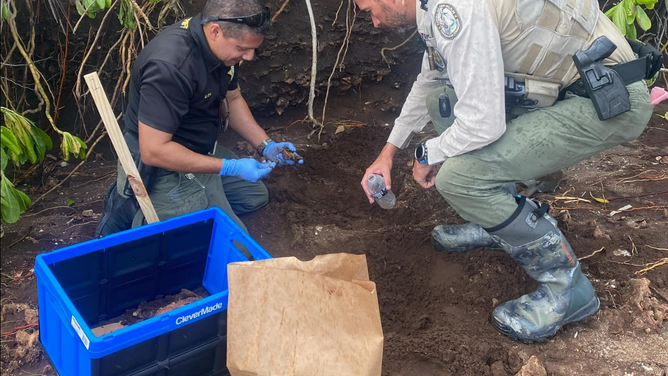
At least six human remains were found on Hutchison Island after Hurricane Nicole.
(Martin County Sheriff’s Office)
“Detectives are working diligently to preserve and carefully remove the remains that are exposed with the utmost care and respect. Those remains will be transferred to the Medical Examiner’s Office and then to the Bureau of Archeological Research,” the agency said.
NICOLE’S DANGEROUS STORM SURGE WASHES AWAY ROADS, BOARDWALKS ALONG FLORIDA COAST
The barrier island has been a hotbed of discoveries for decades, and archeologists believe that previous discoveries dated back to the Glades time period between 500 B.C. and 1750 A.D.
The Florida Public Archeology Network is aware of the sighting and said significant storms such as Hurricane Dorian in 2019 and other significant systems have helped unearth historical discoveries in the past.
“Florida has over 14,000 years of history,” said Emma Dietrich, an archeologist at the Florida Public Archeology Network. “It was a great place to live back then and is a great place to live today. So, it is not a surprise that people are making discoveries.”
The Native American Graves Protection and Repatriation Act dictates what will happen with the remains and requires witnesses and authorities to treat sacred objects and bones with dignity and respect.
Beachgoers who come across artifacts and other historical findings from the storm are encouraged to report them to the State of Florida at 850-245-6444 or their regional office of the Florida Public Archeology Network.
Years Before Present (BP)
Years Before Present (BP) refers to a time scale used by geologists and archaeologists among other scientists in different fields of studies to denote an event that took place in the past. January 1, 1950, is typically taken as the starting date of the time scale, indicating the 1950s as the time when scientists began using the technology of radiocarbon dating.
Radiocarbon Dating
Radiocarbon dating is a technique used to determine the age of different objects that have organic materials by the use of radiocarbon, which is a carbon isotope that is radioactive. This technique was discovered in the 1940s. Radiocarbon dating utilizes the idea that 14C (radiocarbon) is seamlessly being generated in our atmosphere through the interactions between atmospheric nitrogen and the cosmic rays. The oxygen in the atmosphere combines with the 14C resulting in radioactive atmospheric carbon dioxide that is used by plants during the photosynthesis process. The animals would acquire 14C when they consume plants. Eventually, when the plants and animals die, they stop carbon exchange with the environment. From that instant onwards, 14C continue to decrease because of radioactive decay. A sample of a dead organism like an animal or a plant can be analyzed for the remaining 14C and thereby determining when the plant or animal died. The half-life of radiocarbon 14C is 5,700 years. This is the time it takes for the quantity of 14C to reduce to half the initial value. source
“One advantage to using BP is it avoids the occasionally irate philosophical debate about whether, in this multicultural world of ours, it is more appropriate to use AD and BC, with their explicit references to Christianity, or to use the same calendar but without the explicit references: CE (Common Era) and BCE (Before the Common Era). The problem is, of course, that CE and BCE still use the estimated date of the birth of Christ as the reference points for its numbering system: the two years 1 BCE and 1 CE are numerically equivalent to 1 BC and 1 AD.
However, a major disadvantage of using BP is that the present year, of course, changes every twelve months. If it was a simple matter of counting backward, what was accurately measured and published as 500 BP today in fifty years would be 550 BP. We need a fixed point in time as a starting point so that all the BP dates are equivalent no matter when they are published. Since the BP designation was originally associated with radiocarbon dating, archaeologists chose the year 1950 as a reference point for ‘the present.’ That date was chosen because radiocarbon dating was invented in the late 1940s. At the same time, atmospheric nuclear testing, which throws huge amounts of carbon into our atmosphere, was begun in the 1940’s. Radiocarbon dates after 1950 are virtually useless unless and until we can figure out a way to calibrate for the excessive amount of carbon still being deposited in our atmosphere.” source
Weather extremes unearth human remains across US
If it isn’t a deluge of precipitation making human remains easier to spot, drought conditions in the Desert Southwest have also led to grisly discoveries.
Authorities along dwindling Lake Mead, which is located along the border region of Arizona and Nevada, have reported finding at least six sets of human remains during the past six months.
A megadrought and an increase in consumption of the country’s largest reservoir caused water levels to drop to an 80-year low during the summer.
All the remains have been transferred to the Clark County Coroner’s Office, which will be tasked with determining the deceased’s identity.
Challenges posed to investigators in identifying Lake Mead human remains
A fifth body has been exposed in Lake Mead as a severe drought continues to shrink the lake. FOX Weather’s Max Gorden talks to a forensic meteorologist about the investigations into the other four bodies that have been found in the lake and the challenges these kinds of investigations pose.
See the devastating damage Nicole left behind in Florida’s rare November hurricane strike

